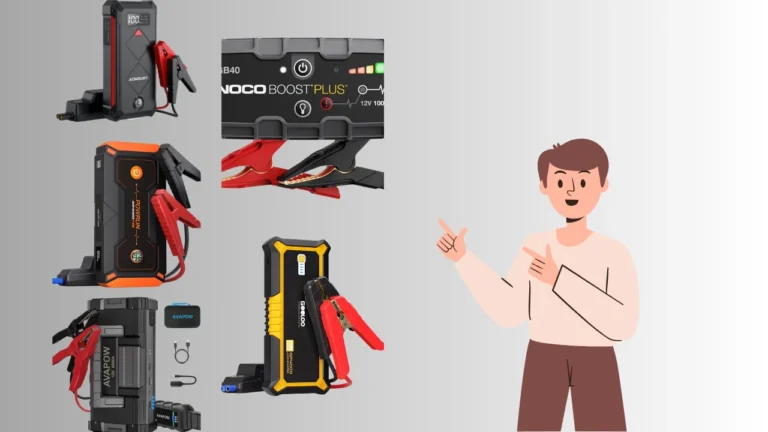A dead battery can leave you stranded, but with the right knowledge and tools, jump-starting your Mini Cooper is a simple process. Here’s a detailed step-by-step guide to safely jump-start your Mini Cooper, along with the necessary items and precautions. So, how to jump start a Mini Cooper? Learn how to safely jump start a 24V system with a 12V battery using proper techniques for a successful start.
Here’s a quick fix for jump-starting a Mini Cooper:
Items You’ll Need:
- Jumper cables: Ensure they are in good condition, without any fraying or damage.
- A second vehicle with a charged battery: Alternatively, a portable jump starter can be used.
- Safety equipment: Consider wearing gloves and safety glasses for extra protection.
- Clean cloth or brush: To clear dirt or corrosion from battery terminals.
How to Jump Start a Mini Cooper | Step-by-Step Guide
Jump-starting a Mini Cooper requires careful steps to ensure safety and success. This guide will walk you through the process, from connecting the jumper cables to troubleshooting common issues. Here’s how to jump start a Mini Cooper:

Step 01: Prepare the Vehicles
- Park both cars close enough for the jumper cables to reach, but make sure they are not touching each other.
- Turn off both vehicles and ensure they are in “Park” (or “Neutral” if manual), and apply the parking brake. This prevents any unexpected rolling or movement during the process.
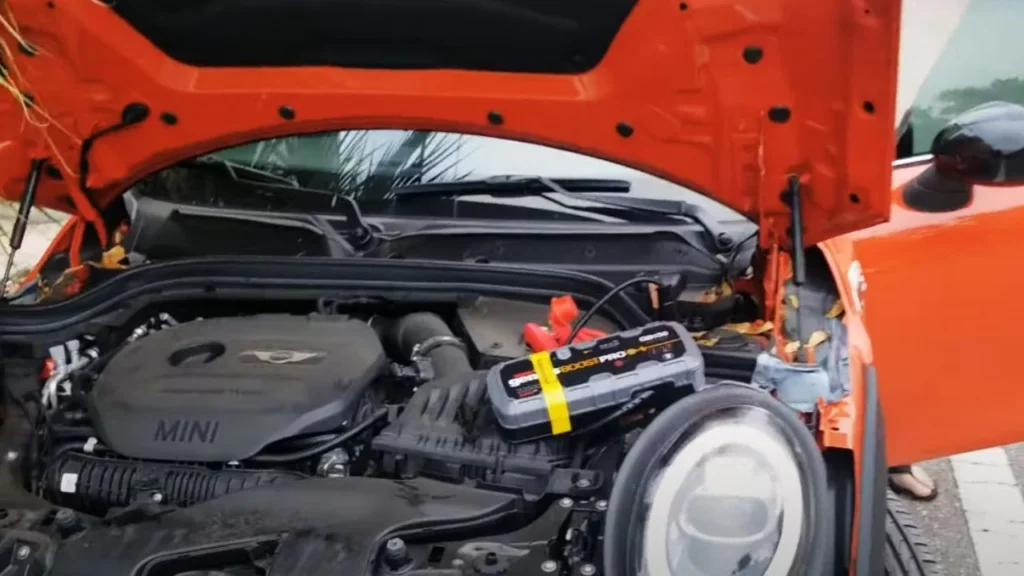
Step 02: Locate the Battery and Jump Points
On most Mini Cooper models, the battery is located in the engine compartment. You’ll find a red cap covering the positive terminal. Lift the cap to expose it.
Locate the negative terminal, typically grounded to a metal part of the engine block. Ensure you have clean, accessible jump points before proceeding.
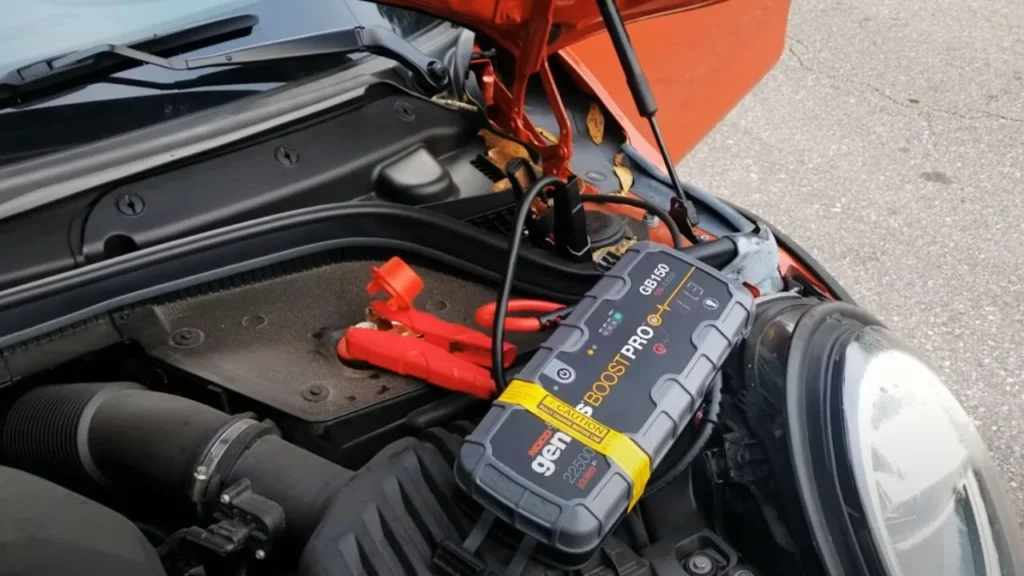
Step 03: Connect the Jumper Cables
Attach the red cable (positive) to the positive terminal on the dead battery first. Then, connect the other end of the red cable to the positive terminal of the good battery in the helper vehicle.
Next, attach the black cable (negative) to the negative terminal of the helper car’s battery. Connect the other end of the black cable to an unpainted metal surface or the negative jump point on your Mini Cooper. This acts as a ground and reduces the risk of sparks near the battery. Discover the best portable marine battery jump starters for reliable power on the water.
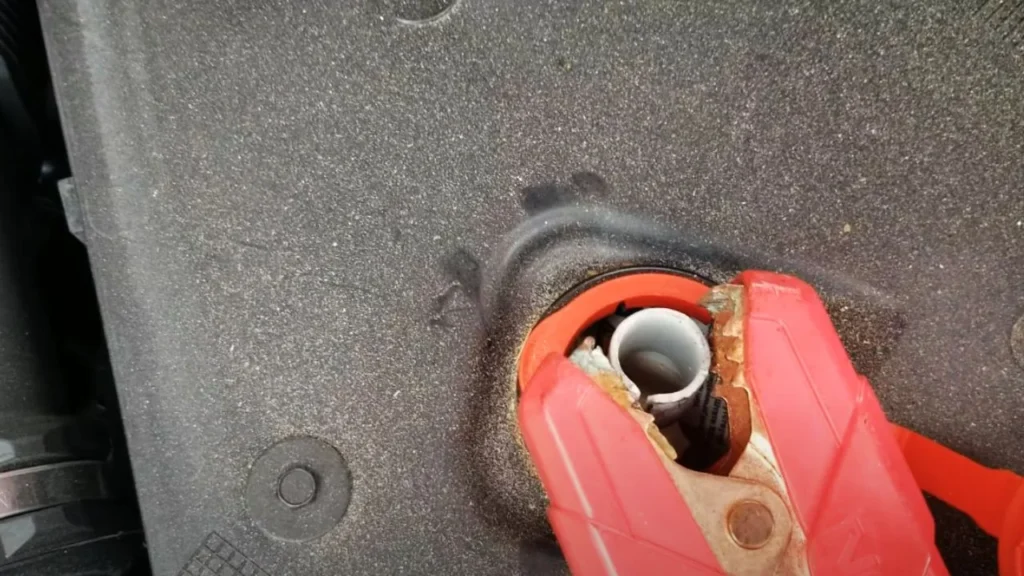
Step 04: Start the Helper Vehicle
Start the engine of the helper vehicle and let it run for a few minutes. This allows power to flow into the dead battery.
Revving the engine of the helper car slightly can help speed up the charging process.

Step 05: Start Your Mini Cooper
After a few minutes, attempt to start your Mini Cooper. If it doesn’t start immediately, wait another few minutes and try again. In many cases, it may take some time to transfer enough charge to start the vehicle, especially if the battery is severely drained.

Step 06: Remove the Cables
Once your Mini Cooper starts, carefully disconnect the jumper cables in the reverse order:
- First, remove the black cable from your Mini Cooper’s ground point, then from the helper vehicle.
- Next, remove the red cable from the positive terminal of the helper vehicle, and finally from your Mini Cooper’s battery.
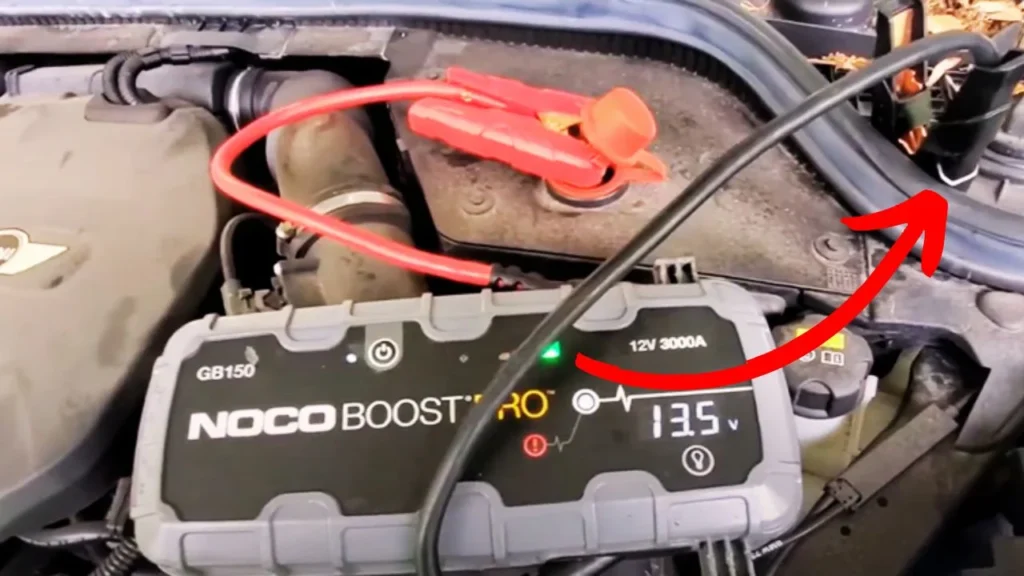
Step 07: Let the Engine Run
After starting, keep your Mini Cooper running for at least 15–20 minutes. This allows the alternator to recharge the battery fully. If possible, take a short drive to help the battery regain more charge.

Step 08: Check the Battery
Once you’ve successfully jump-started your Mini Cooper, it’s essential to have the battery tested, especially if it has been jump-started multiple times. If the battery is old or damaged, replacing it might be necessary to avoid future issues.

Additional Tips and Precautions
- Safety First: Always wear gloves and safety glasses to protect yourself from potential sparks or battery acid leaks. Avoid smoking or lighting matches around the battery to prevent fires.
- Clean the Battery Terminals: Before connecting the cables, ensure the battery terminals are clean. Dirt or corrosion can hinder a proper connection.
- Consider a Portable Jump Starter: If you often find yourself in situations where another car isn’t available, a portable jump starter can be a valuable investment.
- Know When to Get Help: If your Mini Cooper doesn’t start even after several attempts, or the battery dies again shortly after starting, there may be a deeper electrical issue that requires professional attention.
Common Reasons for Battery Drain in Mini Coopers
Understanding the cause of your dead battery can help prevent it from happening again. Here are a few common causes of battery drain in Mini Coopers:
- Leaving lights on: Headlights, interior lights, or other electrical accessories can drain the battery if left on overnight.
- Faulty alternator: The alternator charges your battery as you drive. If it’s faulty, your battery may not charge properly, leading to frequent jump starts.
- Old battery: A battery typically lasts around 3–5 years. If your battery is older, it might not hold a charge as effectively.
Troubleshooting and Maintenance After Jump-Starting Your Mini Cooper
Once you’ve successfully jump-started your Mini Cooper, there are several important steps to take to ensure that your battery remains healthy and to avoid future issues. Jump-starting is only a temporary solution to get your car running, and you should always investigate the root cause of the problem. Find the best portable car jump starter with an air compressor for added versatility and convenience.
1. Drive the Car to Recharge the Battery
After jump-starting, it’s crucial to let the engine run for at least 15–20 minutes. This allows the alternator to recharge the battery. However, simply idling the car may not provide enough charge.
It’s recommended to drive the car at varying speeds (ideally at highway speeds) for about 30 minutes to ensure the battery gets a sufficient charge. If you are driving only short distances or in stop-and-go traffic, your battery may not have enough time to recharge fully, potentially leading to another dead battery shortly after.
If the battery dies again after a short drive, it could indicate that the battery is not holding a charge, which brings us to the next important step.
2. Test the Battery’s Health
If you’ve had to jump-start your Mini Cooper multiple times, it’s likely that your battery is either old or damaged. A simple way to determine whether your battery is still functional is by performing a voltage test.
You can use a multimeter to check the voltage of your battery while the car is off. A healthy battery should read around 12.6 volts when fully charged. If the voltage is lower than 12 volts, it could indicate that the battery is dying or cannot hold a charge.
Most auto parts stores offer free battery testing services, so it’s a good idea to take your car to a professional for a thorough test. If your battery is old (typically more than three to five years), you should consider replacing it, as an aging battery may not hold a charge well, even if jump-started.
3. Check the Alternator
If the battery tests fine but you’re still having issues, the problem might be with the alternator. The alternator is responsible for recharging the battery while the engine is running. If it is faulty, the battery will not recharge properly, even after driving. Signs of a failing alternator include dimming lights, strange noises, or warning lights on the dashboard.
You can test the alternator by measuring the voltage across the battery terminals while the engine is running. A healthy alternator should produce a voltage between 13.7 and 14.7 volts. If the reading is below 13 volts, the alternator may need to be repaired or replaced.
4. Inspect the Cables and Connections
Corroded or loose battery terminals can prevent the flow of electricity between the battery and the car’s electrical system. After jump-starting, inspect the battery terminals for corrosion, which appears as a white or greenish crust around the terminals. If you see corrosion, clean the terminals with a mixture of baking soda and water, and use a wire brush to scrub the terminals clean.
Ensure that the battery cables are tightly connected to the terminals. Loose connections can cause intermittent starting problems and may prevent the battery from charging properly. After cleaning and tightening the cables, check for any signs of wear or damage in the cables themselves. Replace any cables that are frayed or cracked.
5. Prevent Future Battery Drain
Once your Mini Cooper is running again, take steps to avoid unnecessary battery drains. Leaving electrical components like headlights, interior lights, or the radio on when the car is off can quickly deplete the battery. Some Mini Coopers have a feature where certain electronics remain on for a short period after the engine is turned off, so always double-check that everything is off before leaving the vehicle.
Cold weather can also take a toll on battery life. In colder climates, consider using a battery blanket to keep the battery warm when the car is parked overnight. This helps prevent the battery from losing charge due to freezing temperatures.
For cars that are not driven frequently, a battery tender or trickle charger can help maintain the battery’s charge. These devices connect to the battery and provide a slow, steady charge, ensuring that the battery doesn’t go flat from lack of use. Can a jump starter revive a completely dead battery? Check out this guide on jump starters and dead batteries for answers.
6. Recognize When It’s Time for a Replacement
If your battery is more than three to five years old, even regular maintenance and jump-starting may not be enough to keep it functioning properly. Most car batteries have a limited lifespan, and as they age, they lose the ability to hold a charge. Frequent jump-starts, dimming lights, and difficulty starting the engine are all signs that your battery may be reaching the end of its life.
When choosing a replacement battery for your Mini Cooper, ensure that you select the correct type and size for your model. Check your owner’s manual or consult with a professional to find the right specifications. Opt for a high-quality battery with a good warranty to ensure it lasts longer and performs reliably.
7. Check for Other Electrical Issues
If jump-starting your Mini Cooper doesn’t solve the problem, and the battery and alternator both test fine, there could be other underlying electrical issues. Faulty wiring, blown fuses, or a malfunctioning starter could prevent the car from starting, even with a fully charged battery. In such cases, it’s best to have a professional mechanic inspect the electrical system to diagnose and repair the issue.
Modern cars like the Mini Cooper rely on complex electronic systems, and problems with sensors, the ignition switch, or even the ECU (engine control unit) can cause starting issues. Attempting to fix these problems without the proper expertise can lead to further complications, so it’s important to seek professional assistance for more advanced electrical issues.
Conclusion
Jump-starting a Mini Cooper is a straightforward process that any car owner can perform, provided they follow the right steps and precautions. Always ensure that your battery is well-maintained, and if it needs multiple jump-starts, consider replacing it to avoid future inconveniences. With the correct tools and knowledge, you’ll be back on the road in no time, whether you’re driving a Mini Cooper or helping out a fellow motorist. Hope so, now you know how to jump start a Mini Cooper.
For more detailed insights on vehicle maintenance and jump-starting procedures, you can refer to guides like those from Vehiclers and East Bay MINI, which provide in-depth explanations on how to safely jump-start your Mini Cooper and prevent further battery issues. Follow the steps outlined in this guide to jump start a box truck quickly and safely.
Ali is a tech enthusiast and automotive aficionado, passionate about sharing insights on the latest innovations and industry trends.

